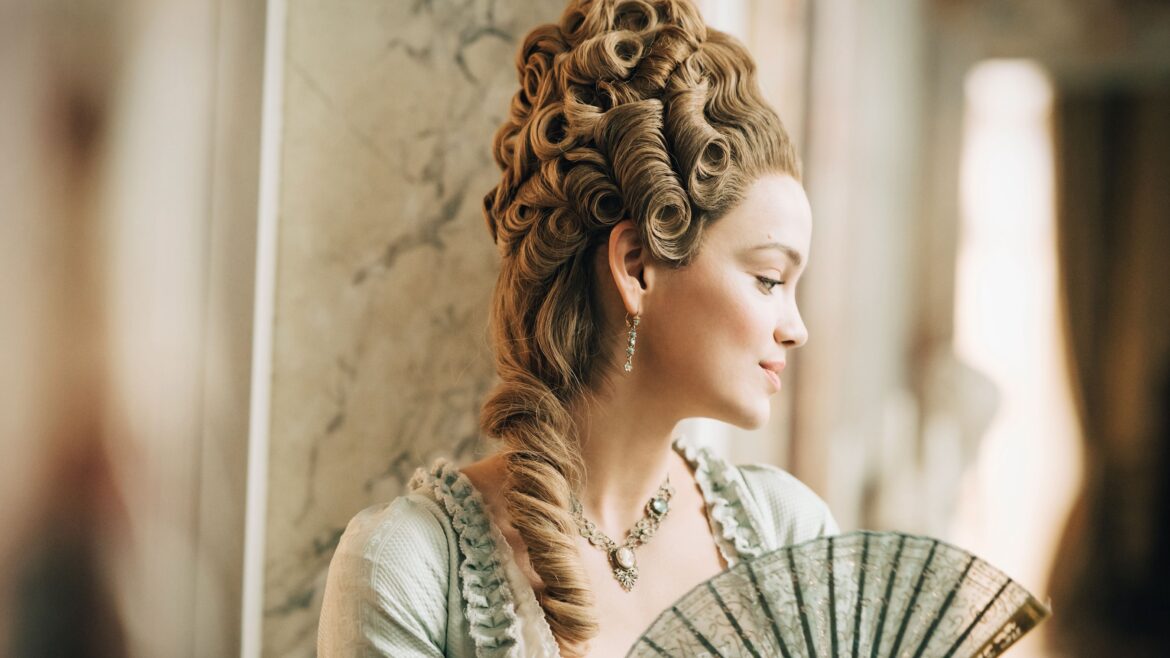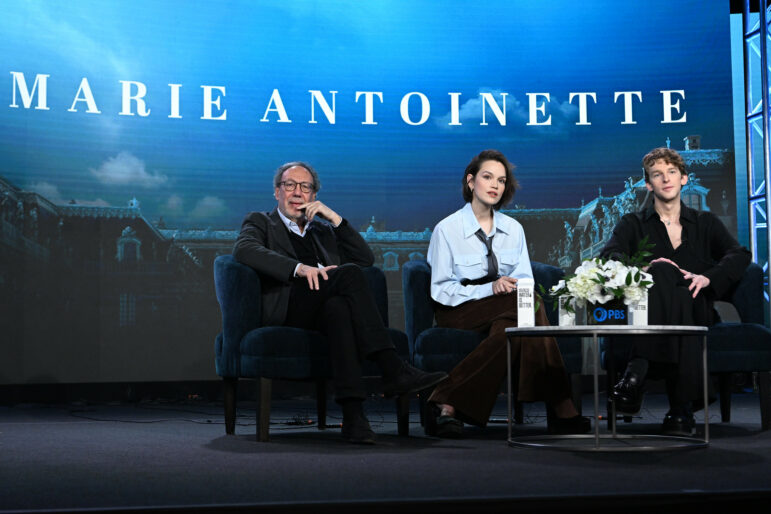How ‘Marie Antoinette’ sought humanity, humility inside Versailles’ Hall of Mirrors

Courtesy of © Caroline Dubois - Capa Drama / Banijay Studios France / Les Gens / Canal+
Emilia Schüle portrays Marie Antoinette in the PBS drama.
The story of Marie Antoinette has been told again and again in the years since her dramatic death. She’s been a noted character in more than 20 movies, including Sofia Coppola’s 2006 eponymous film, and has been referenced in everything from Gone With The Wind to The Simpsons. Rumors about the late queen and fictionalized quotes like “let them eat cake” have swirled for centuries, as well.
Marie Antoinette, a new eight-episode drama premiering Sunday on PBS, aims to get at the root of all that fascination. Created by The Favourite’s Deborah Davis, Marie Antoinette was produced by the same people who helped launch Versailles, the Canal+ series about Louis XIV that became popular on Netflix in the states. With an all-female writers’ room and a commitment to handheld cinematography, the series aims to take an intimate and personal look at the Dauphine from her pre-marriage training in Austria to her untimely death.
Producer Claude Chelli says that the series tries to tackle Marie Antoinette from a contemporary angle, looking at her as both a woman of her time but also as a feminist hero. “It’s very feminist to be somebody who will not take no for an answer and will try to live their own life in a kingdom where women aren’t allowed to do anything,” says Chelli.
Emilia Schüle, who plays the title character, agrees. She says Davis and company’s take on Marie Antoinette is “certainly no dusty period drama,” calling it instead “a show about a human being with a very complicated family who’s living at a famous and equally strange court.” As Marie Antoinette struggles to find her place in a new family, a new marriage and adulthood, Schüle says, viewers will get a look at the woman as a whole and not just as a fashionable caricature.
“Marie Antoinette was 14 years old when she left Austria, so she lost her mom and her home country by being married off to some guy she’s never met before,” says Schüle. “Her only job in life is to give birth to an heir, but then her husband doesn’t touch her or sleep with her for seven years, and that’s humiliating. Their sex life was public and being discussed all over Europe. I think she fled into partying and gambling and dresses because she wanted to distract herself from that humiliation.”

The magic of Versailles
In Marie Antoinette, the quiet and shy Louis XVI is played by Bridgerton’s Louis Cunningham, who is both confounding and deeply sympathetic. He’s been thrust into a situation that’s almost as alienating as the future queen’s, with a pressure to perform that’s both metaphorical and very real. The whole marriage is under a lot of pressure from all manner of sources, including Louis XIV (James Purefoy), his mistress Madame du Barry (Gaia Weiss), and a heaping helping of scheming family members and prying diplomats, all concerned with working whatever angle will give them an edge.
Among the ways that the producers of Marie Antoinette worked to get inside the character is by shooting much of the show’s action at the actual Château de Versailles outside Paris. Each Monday during production, while the palace was closed to visitors, the show was able to rent it out, shooting key scenes in places like the Hall of Mirrors, the King’s State Apartment and various other luxurious galleries and chambers. Producers also shot scenes outside the castle, as well as in other notable castles around France.
“Shooting at Versailles is very complicated,” says Chelli. “We’d go every Monday and shoot something we cannot reproduce, like the Hall of Mirrors, which you can get nowhere else. We had total access and the people at the castle are very, very cooperative with us, but it’s a national monument, so going from one point to the next in the corridors, you have to put basically wall-to-wall carpeting along the way so that technicians don’t scrape the ground. Each time you want to move a chair, you have to call somebody with white gloves who’d move the chair for you. It’s always more complicated.”
“My first day of filming was at Versailles, and it was a day to remember,” Schüle says. “It’s super beautiful, and everything is just so perfect and grand. It’s absolutely magical to be walking through the Hall of Mirrors without all the tourists and the selfie sticks — not to mention getting to reenact what actually happened there.”
‘Corsets are really a means to suppress women’
The show also worked with a Versailles historian and an absolutely massive costume department, all in an effort to make the show both as period and as visually interesting as possible. Academy Award nominee Madeline Fontaine, whom Chelli calls the “best costume designer in France,” was enlisted as that department’s artistic director. “It was very important for us that Marie Antoinette looked beautiful, that she dressed beautifully and that the wigs were very complex and realistic,” says Chelli.
Two of the dresses the future queen wears in the show are actually couture Dior creations, as well. “We’d have special Versailles days, and we’d have special Dior days,” says Schüle. “The Dior days were when I felt most like the Queen of France.”
Schüle says that even on days she wasn’t wearing Dior, getting into costume helped her understand Marie Antoinette’s tortured mindset a bit better. “Corsets are really a means to suppress women,” she explains. “It just takes ages to get dressed, and you need people to help you, so you’re so dependent on other people. Everything is harder, and you can’t breathe properly. I had to change how I ate, eating less but more often, just so I wouldn’t get sick. It’s really depressing, in a way.”
“As a royal at that time, every single gesture or what you’d do during the day was codified,” says Chelli. “You would wake up in public, you would dress in public, you would eat in public, and you would deliver your baby in public. You would have to salute somebody in a certain way. When Marie Antoinette arrived, she said, ‘I can’t do that.’ That’s part of the reason why she was rejected, because she didn’t accept the rule of the castle, the rule of Versailles. Some people thought it was the gesture of a spoiled brat, but I think her decision was actually very personal. She was looking for how to live her own life, and that was revolutionary in its own way.”






